How to Plant Cucumbers: A Beginner’s Guide
- February 20, 2024
- 2 comment
Planting cucumbers is a rewarding endeavor for both novice and experienced gardeners, offering a bounty of fresh, crisp vegetables throughout the warmer months. Successful cultivation begins with choosing a suitable variety for your needs and ensuring a planting time when the soil has warmed to at least 60°F to avoid frost damage. Proper soil preparation, enriched with organic matter, lays the foundation for healthy growth, while consistent watering and support for the climbing vines are key to a fruitful harvest. With a little care and attention, cucumbers can be an abundant and tasty addition to your garden.
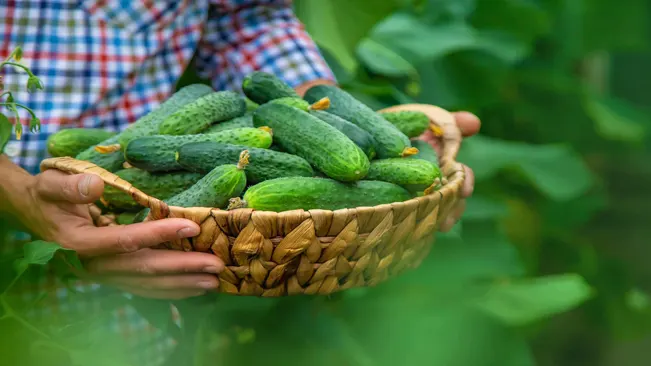
Selecting the Right Variety
The first step is choosing the right cucumber variety for your needs and growing conditions. Consider factors like climate, space, and how you plan to use the cucumbers. For smaller gardens or container planting, compact bush varieties may be ideal. For fresh eating, slicing cucumbers are best, while pickling varieties are better for, well, pickling.Timing and Temperature
English Cucumber (European or seedless cucumber)
These cucumbers are longer and thinner than traditional cucumbers, with a smoother skin and fewer seeds. They are often wrapped in plastic at the grocery store. English cucumbers have a mild, slightly sweet flavor and are commonly used in salads and sandwiches.
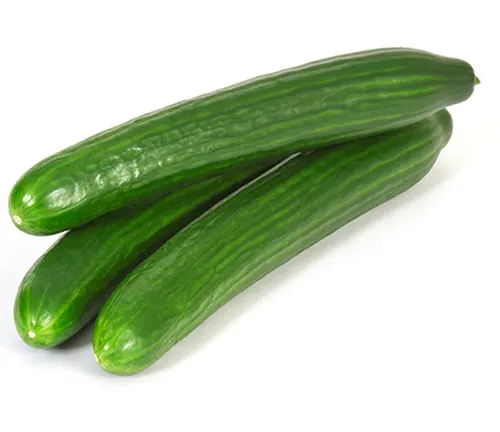
Pickling Cucumber
Pickling cucumbers are smaller in size and have bumpy skin. They are specifically bred for making pickles but can also be eaten fresh. Varieties include ‘National Pickling’, ‘Boston Pickling’, and ‘Kirby’.
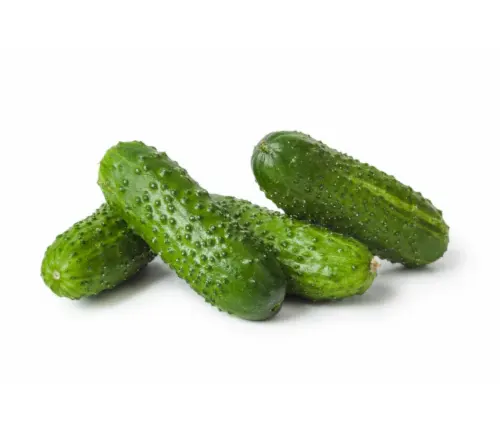
Slicing Cucumber
Slicing cucumbers are the most common type found in grocery stores. They are typically larger than pickling cucumbers and have smooth, dark green skin. Varieties include ‘Marketmore’, ‘Straight Eight’, and ‘Burpless’.
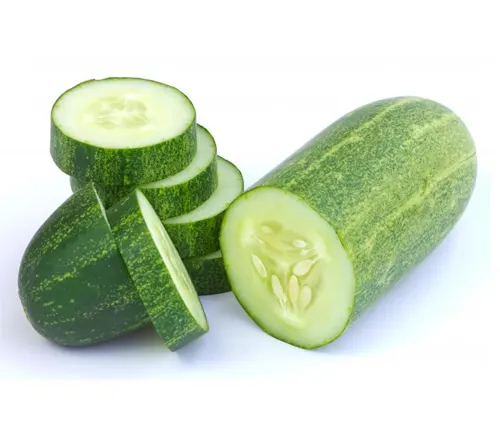
Armenian Cucumber (Snake cucumber)
Armenian cucumbers are long and slender with light green, ridged skin. They have a mild flavor and are often eaten raw or used in salads.
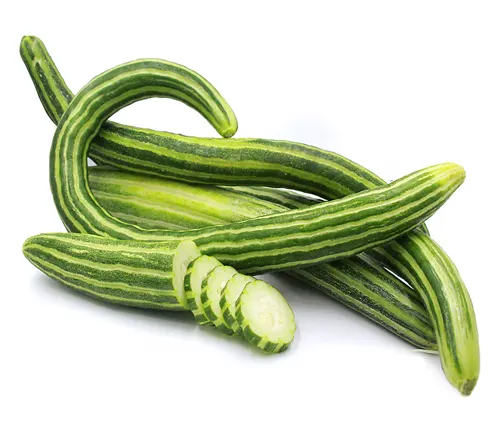
Lemon Cucumber
Lemon cucumbers are small, round, and yellow, resembling a lemon in both size and appearance. They have a mild, slightly sweet flavor and are often used fresh in salads or as a snack.
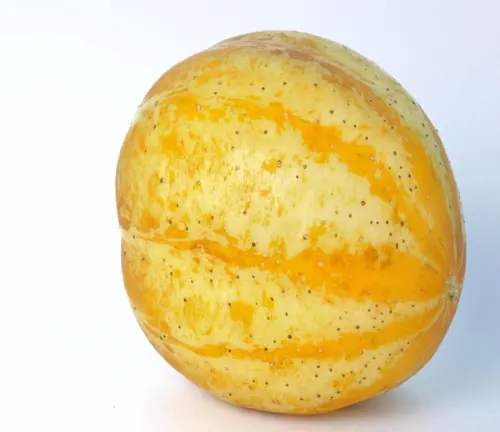
Asian Cucumber
Asian cucumbers come in various shapes and sizes but are generally longer and slimmer than traditional cucumbers. They are commonly used in Asian cuisines such as Japanese, Korean, and Chinese dishes.

Bush Cucumber
Bush cucumbers are compact plants that are well-suited for small gardens or containers. They produce smaller cucumbers and require less space to grow.

Divine Cucumber
These cucumbers are known for their crisp texture and sweet flavor. They are often used in salads or as a refreshing snack.
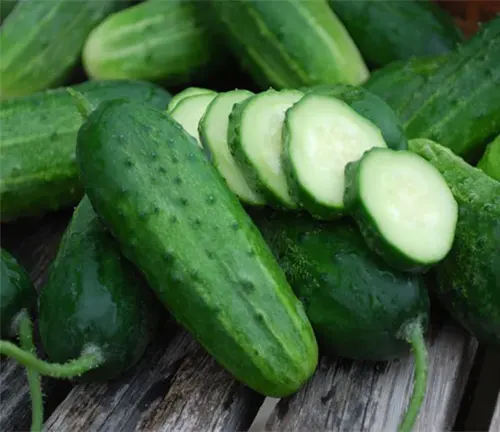
Cucumbers are warm-season vegetables that don’t tolerate frost. The ideal soil temperature for planting cucumber seeds is around 70°F (21°C), but not below 60°F (16°C). In cooler climates, this typically means waiting until a few weeks after the last frost date to plant outdoors. Alternatively, you can start seeds indoors about 3-4 weeks before the last expected frost, using peat pots to minimize root disturbance when transplanting.
Soil Preparation
Cucumbers thrive in well-drained, fertile soil with a pH between 6.0 and 7.0. Amend your garden soil with plenty of organic matter like compost or well-rotted manure to improve fertility and drainage. If you’re working with heavy clay soil, consider raised beds or containers to ensure proper drainage.
- Well-Drained Soil: Cucumbers prefer soil that drains well to prevent waterlogging, which can lead to root rot and other issues. Sandy loam soil is ideal for cucumbers because it provides good drainage while still retaining moisture. However, if you have clay soil, which tends to be heavy and compacted, it’s crucial to improve drainage.
- pH Level: The pH level of the soil is also important for cucumber growth. Cucumbers prefer slightly acidic to neutral soil with a pH between 6.0 and 7.0. You can test the pH of your soil using a soil testing kit available at gardening stores or through your local agricultural extension office. If the pH is too low (acidic), you can add lime to raise it. If it’s too high (alkaline), you can add sulfur to lower it.
- Organic Matter: Incorporating organic matter into the soil is vital for improving fertility, structure, and drainage. Compost, well-rotted manure, or other organic materials can be added to the soil before planting cucumbers. Organic matter helps to retain moisture, promotes beneficial microbial activity, and provides essential nutrients for plant growth. Aim to incorporate organic matter into the soil to a depth of at least 6-8 inches.
- Raised Beds or Containers: If you’re dealing with heavy clay soil that doesn’t drain well, raised beds or containers can be a great solution for growing cucumbers. Raised beds provide better drainage and allow you to control the soil composition more effectively. Containers, such as large pots or grow bags, also offer good drainage and are suitable for growing cucumbers in limited space or on patios and balconies.
- Soil Preparation Timing: It’s best to prepare the soil for cucumbers several weeks before planting. This allows time for organic matter to decompose and integrate into the soil, providing a more hospitable environment for plant roots. Additionally, early soil preparation gives you the opportunity to adjust pH levels if necessary and address any drainage issues.
Planting
You can plant cucumber seeds directly in the ground or start them indoors. When sowing directly, plant seeds about 1 inch deep, either in rows or “hills” (small mounds of soil). Hills should contain 2-3 seeds and be spaced about 3 feet apart, with rows about 4-6 feet apart. This spacing allows for adequate air circulation and reduces the risk of disease.
Direct Seeding
Cucumbers can be directly seeded into the ground once the soil has warmed up to around 70°F (21°C) and all danger of frost has passed. This typically occurs in late spring or early summer, depending on your location. Before planting, prepare the soil by loosening it to a depth of about 6-8 inches (15-20 cm) and incorporating organic matter such as compost to improve drainage and fertility.
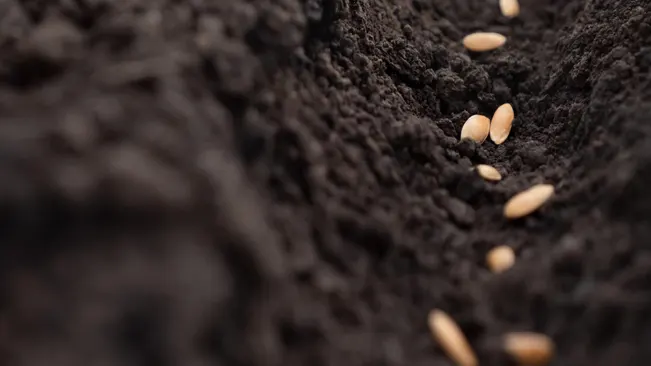
Plant cucumber seeds about 1 inch (2.5 cm) deep in the soil. Space the seeds 4-6 inches (10-15 cm) apart within rows. Optionally, you can plant seeds in small mounds or “hills” to improve drainage and soil warmth. Hills should be about 12-18 inches (30-45 cm) in diameter and spaced 3 feet (90 cm) apart. After planting, water the soil thoroughly to ensure good seed-to-soil contact and adequate moisture for germination.
Indoor Start
If you have a shorter growing season or want to get a head start on the growing season, you can start cucumber seeds indoors 2-4 weeks before your last expected frost date. Use seed trays or small pots filled with seed starting mix. Plant one or two cucumber seeds per container, about 1 inch (2.5 cm) deep. Keep the soil consistently moist but not waterlogged.
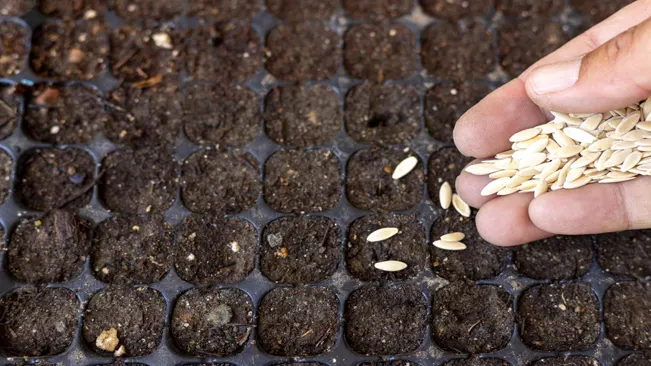
Cucumber seeds typically germinate within 7-10 days when kept at a temperature between 70-85°F (21-29°C). Once seedlings have developed a few true leaves and all danger of frost has passed, they can be transplanted into the garden. Harden off the seedlings by gradually exposing them to outdoor conditions over a week before transplanting.
Spacing
When planting cucumbers, proper spacing is essential for healthy growth and good yields. If planting in rows, space the rows 4-6 feet (1.2-1.8 meters) apart to allow for ample air circulation and access for maintenance tasks like watering and harvesting. If using hills, space them 3 feet (90 cm) apart to give the vines room to spread and avoid crowding. Within each hill, thin seedlings to leave the strongest one or two plants.
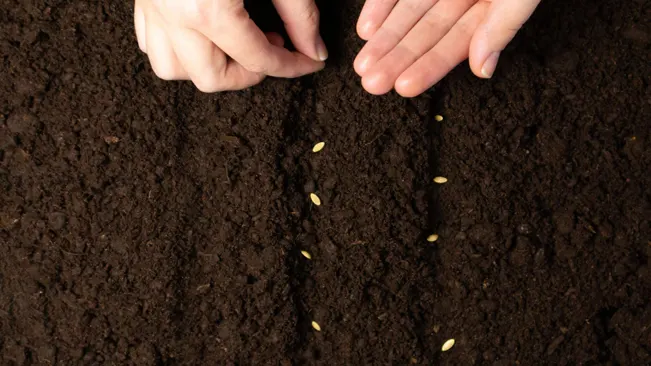
Sunlight and Water
Cucumbers thrive in full sunlight, so choose a location in your garden that receives at least 6-8 hours of direct sunlight per day. Keep the soil consistently moist but not waterlogged, especially during periods of hot, dry weather. Water cucumbers at the base of the plant to avoid wetting the foliage, which can promote fungal diseases.
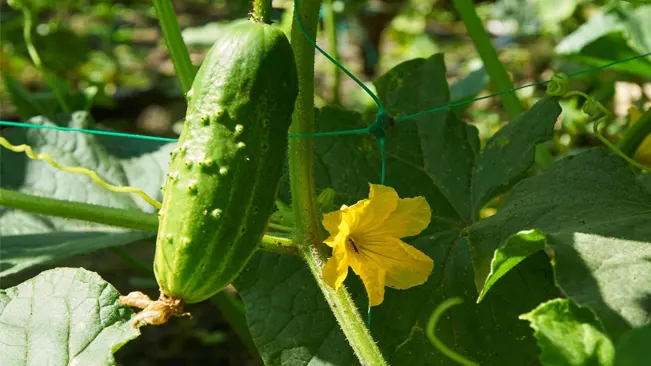
Watering and Mulching
Consistent watering is crucial for cucumber plants, especially during flowering and fruit development. Aim for about 1 inch of water per week, but adjust based on temperature and rainfall. Using mulch around your plants can help retain soil moisture, suppress weeds, and keep the soil temperature stable.
Watering
- Consistency: Cucumber plants require consistent moisture to thrive, especially during key stages like flowering and fruit development. Inconsistent watering can lead to problems such as blossom end rot and poor fruit set.
- Frequency: Aim to provide cucumbers with about 1 inch of water per week. However, this can vary depending on factors like temperature, humidity, and soil type. During hot, dry periods, you may need to water more frequently to prevent the soil from drying out.
- Timing: Watering in the morning is often preferred because it allows the foliage to dry out during the day, reducing the risk of fungal diseases. Avoid watering in the evening, as damp foliage overnight can promote fungal growth.
- Deep Watering: Ensure that the water penetrates deeply into the soil, reaching the cucumber plant’s root zone. Shallow watering encourages shallow root growth, which makes the plants more susceptible to stress during dry periods.
Mulching
- Benefits: Mulching offers several benefits for cucumber plants. It helps retain soil moisture by reducing evaporation, which is especially important during hot weather. Mulch also suppresses weed growth, which can compete with cucumbers for water and nutrients. Additionally, it helps keep the soil temperature stable, which is beneficial for cucumber root development.
- Types of Mulch: Common types of mulch for cucumbers include organic materials like straw, shredded leaves, grass clippings, and compost. These materials not only conserve moisture but also break down over time, enriching the soil with nutrients.
- Application: Apply a layer of mulch around the base of cucumber plants, leaving a few inches of space around the stems to prevent moisture-related diseases. The mulch layer should be several inches thick to provide effective weed suppression and moisture retention.
- Maintenance: Check the mulch periodically to ensure it remains in place and hasn’t compacted, which can impede water penetration. Replenish the mulch layer as needed, especially after heavy rainfall or as the mulch decomposes over time.
Fertilizing
Cucumbers are heavy feeders and benefit from regular fertilization. Use a balanced, all-purpose vegetable garden fertilizer according to package instructions. Alternatively, incorporate a slow-release fertilizer into the soil at planting time.
Nutrient Requirements: Cucumbers are considered heavy feeders, meaning they require a lot of nutrients to support their growth and fruit production. Key nutrients needed by cucumbers include nitrogen (for leaf and stem growth), phosphorus (for root development and flowering), and potassium (for fruit development and overall plant health).
Fertilizer Types: There are various types of fertilizers that can be used to feed cucumbers, including synthetic chemical fertilizers and organic fertilizers. Synthetic fertilizers typically contain a balanced blend of essential nutrients in concentrated form. Organic fertilizers, such as compost, aged manure, or organic fertilizer blends, provide nutrients in a slower-release form and also improve soil structure and fertility over time.
Application Timing: Cucumbers should be fertilized regularly throughout the growing season to ensure a steady supply of nutrients. Start by incorporating fertilizer into the soil at planting time to provide initial nutrition for young seedlings. After that, fertilize every 3-4 weeks during the growing season or as directed by soil test results or fertilizer package instructions.
Application Method: Fertilizer can be applied to cucumbers using various methods, including broadcasting granular fertilizer over the soil surface, side-dressing along the rows, or incorporating fertilizer into planting holes or furrows. Water-soluble fertilizers can also be applied as a liquid solution by watering plants with a diluted fertilizer mixture
Balanced Fertilization: It’s important to use a balanced, all-purpose vegetable garden fertilizer that provides a mix of nitrogen, phosphorus, and potassium, as well as micronutrients like calcium, magnesium, and sulfur. Follow the recommended application rates provided on the fertilizer package to avoid over-fertilization, which can lead to nutrient imbalances or environmental pollution.
Slow-release Fertilizers: Slow-release fertilizers are designed to gradually release nutrients over an extended period, providing a steady supply of nutrition to plants without the risk of burning or leaching excess nutrients. Incorporating a slow-release fertilizer into the soil at planting time can help ensure consistent nutrient availability for cucumbers throughout the growing season.
Supporting Plants
Trellising your cucumber plants has many benefits, including improved air circulation, easier harvesting, and cleaner fruit. It also saves space, making it ideal for smaller gardens. You can use stakes, cages, or trellises to support your plants.
- Improved Air Circulation: Trellising allows for better airflow around the cucumber plants. This helps to reduce humidity levels and minimize the risk of fungal diseases such as powdery mildew, which can be common in cucumbers grown in humid conditions. Good air circulation also aids in pollination, which is essential for fruit development.
- Easier Harvesting: When cucumber plants are trellised, the fruits hang down freely, making them more accessible for harvesting. You won’t need to search through dense foliage to find ripe cucumbers, which can save time and effort during harvest.
- Cleaner Fruit: By keeping the cucumber fruits off the ground, trellising helps to prevent them from coming into contact with soil, debris, or pests. This reduces the likelihood of fruit rot and damage caused by pests or diseases. Cleaner fruit also means less washing required before consumption.
- Space Saving: Trellising allows you to grow cucumbers vertically, saving valuable garden space. This is especially beneficial for gardeners with limited space or those who want to maximize their growing area. Vertical gardening also makes it easier to manage and tend to your plants, as everything is more accessible.
- Support Options: There are various methods you can use to support cucumber plants on trellises. Stakes, cages, or dedicated cucumber trellises are all effective options. Stakes can be driven into the ground near the plants, and the vines can be tied to them as they grow. Cages provide a ready-made support structure that the cucumber vines can climb. Dedicated cucumber trellises are designed specifically for cucumbers and often feature netting or slats for the vines to climb.
Pest and Disease Control
Common cucumber pests include cucumber beetles, aphids, and spider mites. Diseases to watch out for include powdery mildew, downy mildew, and bacterial wilt. Practice crop rotation, use floating row covers to protect young plants, and remove any diseased plants promptly to prevent the spread of pests and diseases.
Common Cucumber Pests
- Cucumber Beetles:
- Use floating row covers
- Handpick beetles
- Apply insecticidal soap or neem oil
- Aphids:
- Spray with water
- Introduce natural predators
- Apply insecticidal soap or neem oil
- Spider Mites:
- Increase humidity
- Prune infested leaves
- Apply insecticidal soap or neem oil
Common Cucumber Diseases
- Powdery Mildew:
- Plant resistant varieties
- Improve air circulation
- Apply fungicides like sulfur or potassium bicarbonate
- Downy Mildew:
- Plant resistant varieties
- Avoid overhead watering
- Apply copper-based fungicides
- Bacterial Wilt:
- Use floating row covers
- Handpick cucumber beetles
- Remove infected plants promptly
General Pest and Disease Control Strategies:
- Crop Rotation
- Good Cultural Practices
- Monitoring
- Integrated Pest Management (IPM)
Pollination
Cucumbers need to be pollinated to produce fruit. If you’re growing them in an area with limited bee activity, you may need to hand-pollinate. You can do this by gently transferring pollen from male flowers (which don’t have a small fruit at the base) to the center of female flowers (which have a small fruit at the base).Step by step list for hand-pollinating cucumber
Identify male and female flowers:
- Male flowers have slender stems and no small fruit at the base.
- Female flowers have a tiny cucumber-like structure at the base.
Collect pollen:
- In the morning when pollen is most abundant, use a small brush or cotton swab to collect pollen from the anthers of male flowers.
- Gently brush the inside of the male flower to gather pollen onto the brush or swab.
Transfer pollen to female flowers:
- Carefully transfer the collected pollen to the stigma of the female flowers.
- Gently brush the pollen onto the stigma, ensuring thorough coverage.
Repeat as needed:
- You may need to repeat the hand-pollination process over several days to ensure adequate fruit set.
Harvesting
Harvest cucumbers when they reach the desired size and are still firm. For most varieties, this means when they are about 6 to 8 inches long. Frequent harvesting encourages the plant to produce more fruit.
Timing
Cucumbers should be harvested when they reach the desired size and are still firm. For most varieties, this means when they are about 6 to 8 inches long. However, this can vary depending on the specific variety and intended use. Some cucumbers are best harvested when smaller for pickling, while others are allowed to grow larger for slicing.
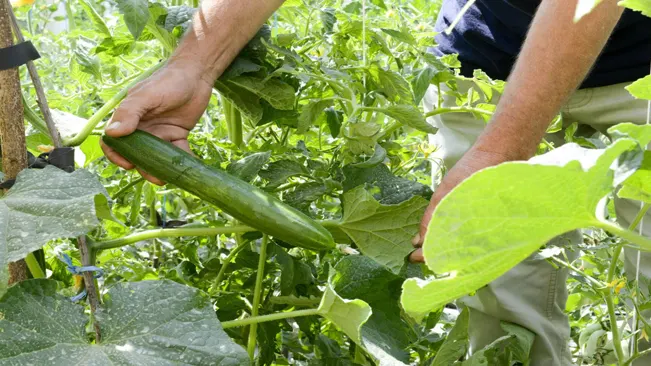
Firmness
When harvesting cucumbers, it’s important to check for firmness. Cucumbers that are overripe may become soft and mushy, while underripe cucumbers can be tough and bitter. A ripe cucumber should feel firm to the touch but not overly hard.

Color
The color of the cucumber can also be an indicator of ripeness, although this varies depending on the variety. Most cucumbers are harvested when they are still green, but some varieties may turn yellow or orange when fully ripe. Check the specific characteristics of the cucumber variety you are growing to determine the appropriate color for harvesting.
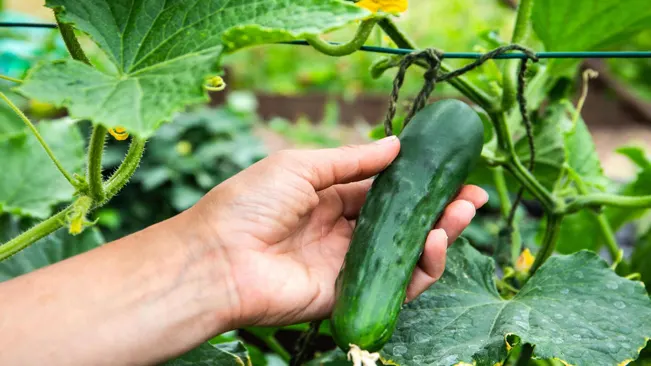
- Frequency: Regular harvesting is important for encouraging the plant to produce more fruit. Cucumbers can be prolific growers, so it’s essential to check the plants frequently for ripe cucumbers. Harvesting cucumbers as soon as they reach the desired size also prevents them from becoming overripe and ensures a continuous supply throughout the growing season.
Tools
When harvesting cucumbers, it’s best to use a sharp knife or pruning shears to cut the stem cleanly from the vine. Avoid twisting or pulling the cucumbers, as this can damage the plant.

Storage
After harvesting, cucumbers can be stored in the refrigerator for several days. To maintain freshness, store them in a perforated plastic bag or wrap them in a damp paper towel before placing them in the crisper drawer.
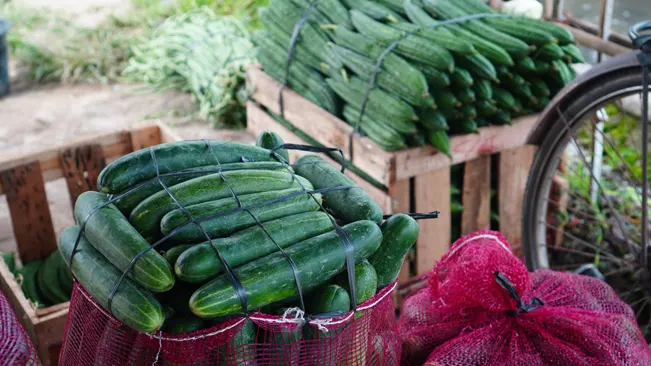
Conclusion
Growing cucumbers can be straightforward and enjoyable with the right preparation and care. By choosing the right variety for your needs, preparing your soil, and providing consistent care, you can enjoy a bountiful harvest of fresh cucumbers from your garden. Remember to monitor for pests and diseases and to harvest regularly to encourage more fruit production. Planting cucumbers requires attention to detail, especially regarding timing, soil conditions, and care throughout the growing season. With the right preparation and ongoing care, you can enjoy a bountiful harvest of fresh, crisp cucumbers from your own garden. Remember, the key to a successful cucumber crop is warm soil, consistent watering, good soil fertility, and proper spacing and support.
FAQs (Frequently Asked Questions)
- When is the best time to plant cucumbers?
Cucumbers are warm-season vegetables and thrive in temperatures between 70°F and 95°F (21°C to 35°C). They should be planted after the danger of frost has passed and soil temperatures have warmed to at least 60°F (15°C), typically in late spring or early summer. - What type of soil do cucumbers prefer?
Cucumbers prefer well-drained, fertile soil with a pH level between 6.0 and 7.0. Amending the soil with organic matter, such as compost, can improve soil structure and fertility, helping cucumbers thrive. - How deep should I plant cucumber seeds or seedlings?
Plant cucumber seeds or seedlings about 1 inch (2.5 cm) deep in the soil. If you’re planting in rows, space the seeds or seedlings about 12 to 24 inches (30 to 60 cm) apart, depending on the variety. - Do cucumbers need support as they grow?
While cucumbers can sprawl along the ground, providing support such as trellises, stakes, or cages can save space, improve air circulation, and make harvesting easier. Cucumber vines are excellent climbers, so they’ll readily climb a support structure. - How much sunlight do cucumbers need?
Cucumbers require full sun, meaning they should receive at least 6 to 8 hours of direct sunlight per day for optimal growth and fruit production. - How often should I water cucumber plants?
Cucumber plants need consistent moisture to thrive. Water them deeply and regularly, aiming to keep the soil evenly moist but not waterlogged. Provide about 1 to 2 inches (2.5 to 5 cm) of water per week, adjusting based on weather conditions. - Should I fertilize cucumber plants?
Yes, cucumbers benefit from regular fertilization. Before planting, incorporate a balanced fertilizer into the soil. Once the plants begin to develop vines and flowers, you can side-dress them with additional fertilizer every 3 to 4 weeks throughout the growing season. - How do I protect cucumber plants from pests and diseases?
Monitor cucumber plants regularly for signs of pests such as cucumber beetles, aphids, and powdery mildew. Use row covers or insecticidal sprays to protect plants from pests, and practice good garden hygiene to minimize disease spread. - When are cucumbers ready to harvest?
Cucumbers are typically ready to harvest 50 to 70 days after planting, depending on the variety. Harvest cucumbers when they reach the desired size and are firm and evenly colored. Regular harvesting encourages continued production. - How should I store harvested cucumbers?
Store harvested cucumbers in the refrigerator to maintain freshness. Place them in a perforated plastic bag or wrap them loosely in a damp paper towel to help retain moisture. Cucumbers can be stored for up to a week but are best enjoyed soon after harvesting for the freshest flavor and texture.

Kristine Moore
Forestry AuthorI'm Kristine Moore, a seasoned garden landscaping professional with over 30 years of experience. My extensive career has been dedicated to transforming outdoor spaces into stunning, sustainable landscapes. With a deep understanding of horticulture, design principles, and environmental stewardship, I have become a respected figure in the field, known for creating harmonious, visually appealing, and eco-friendly gardens. My commitment to excellence and continuous learning in landscaping trends and techniques has solidified my reputation as an expert in garden design and implementation.



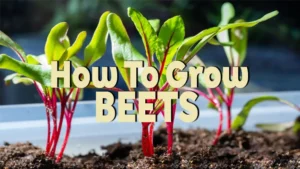


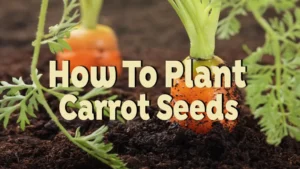
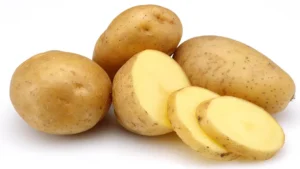
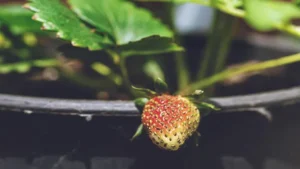
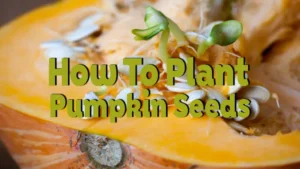



When is the best weeks to give cucumber plants calcium
Adeshina Johnson ogunshe
February 23, 2024 10:05 amHi Adeshina, The best time to provide calcium to cucumber plants is during the flowering and fruit-setting stages. This helps prevent blossom end rot and ensures healthy fruit development.
Kristine Moore
February 26, 2024 6:50 am